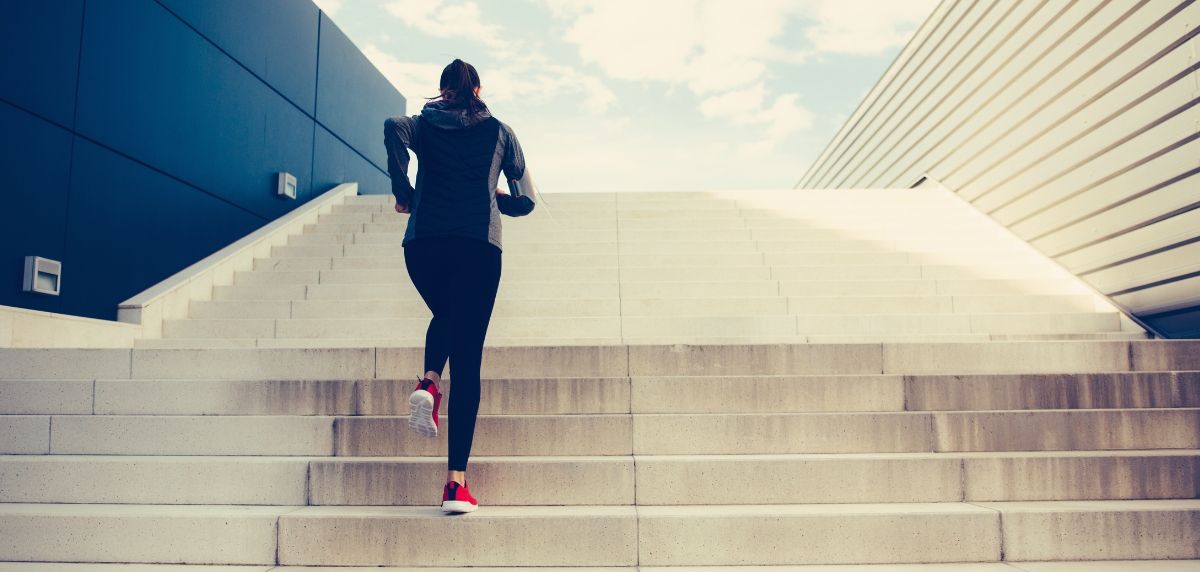You may be interested in:
As much as we love running, finding the motivation to train day in and day out isn't as easy as it seems. No matter how much we enjoy taking stride after stride, there is always a moment, punctual or not, when the desire is diminished, either by mental aspects or by the presence of other types of conditioning factors such as fatigue or more unfavorable weather conditions, for example.
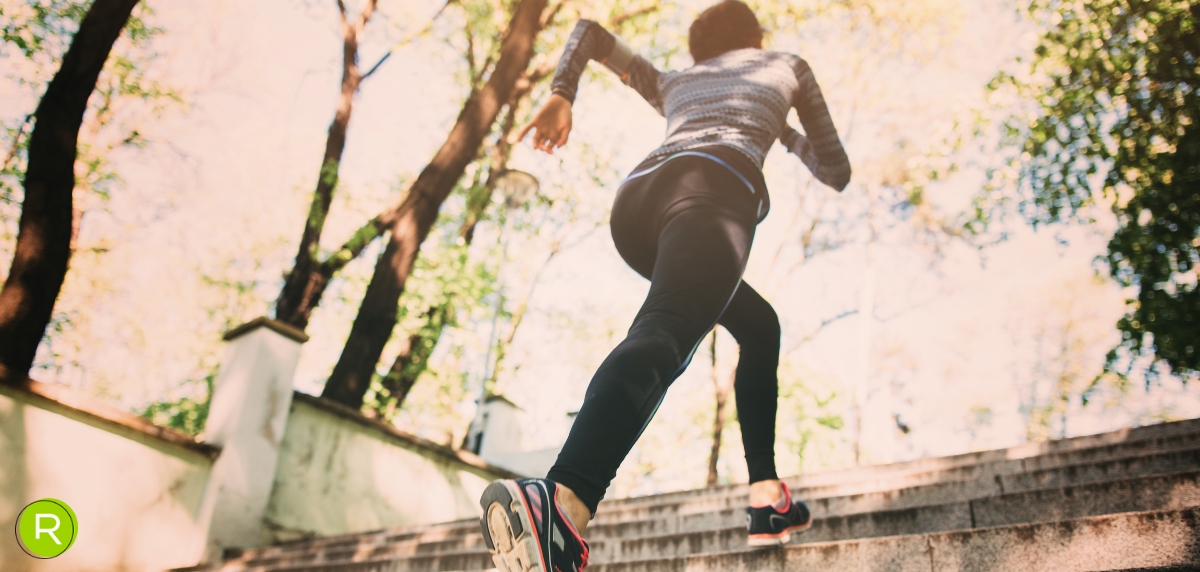
One of the keys to achieving the necessary continuity and to keep on burning the running shoes is the variety of stimuli. A very monotonous workout can be one of the main causes of lack of motivation because, after all, we know in advance what we are going to find.
The repetition of sessions in the form of routine is capable of causing improvements, but sooner or later there comes a time when adaptations are stagnant and the willingness to train decreases.
Not sure which shoe to choose?
In a few simple steps we help you to choose the ideal running shoe for you.
GO TO THE RECOMMENDERBy now I'm sure most of you know the different types of training sessions that we can perform: running, fartleks, series, hills, long runs... Beyond knowing what kind of training methods exist, the important thing is to know the usefulness and purpose of each one, which will help us to periodize each type of session in our training plan.
This time we are going to talk about a type of training that is not very common, but its implementation can improve, among other things, our cardiovascular endurance, power and strength when running. Have you ever tried to train going up and down stairs? Well, that's what we're going to talk about here at RUNNEA.
How can I train stairs?
First of all, it is important to specify what "stairs training" consists of. As the name suggests, it consists of going up and down stairs, simply that. The type of stairs will be the one available in the training area, there is no specific height or length. Of course, the higher the ladder, the more effort we will have to make, logically.
The fact of using it to improve our performance as runners does not determine that it must be done exclusively by running. We can also do it walking. Everything will depend on the physical condition and experience of the athlete, as well as the objective pursued with this type of session.
It is a type of session that leaves the classic training script and that can help us to experience a more fun and enjoyable training. Not only that, but it will be the perfect excuse for people who live in very flat urban areas or in areas far from the mountains to include positive and negative slopes, both to improve their performance and to perform more varied sessions.
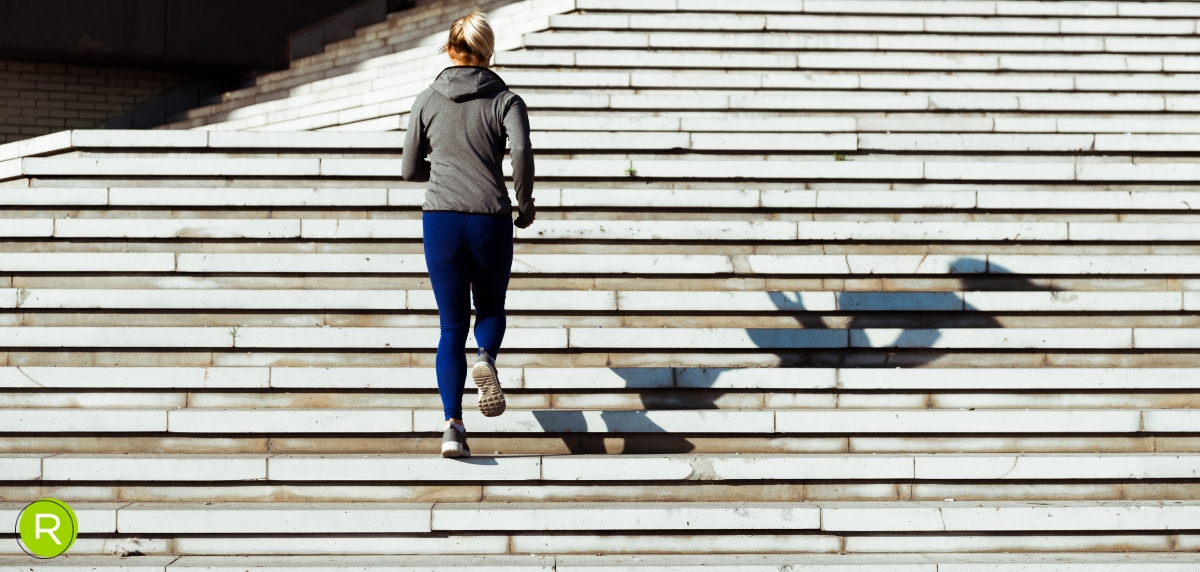
5 benefits of climbing and descending stairs
By climbing and descending stairs, it is possible to improve many physical aspects and, why not say it, certain psychological aspects. Let's list the main benefits of stair training.
Improved muscular endurance
The fact of running up stairs will make our musculature do a different job than when running on flat terrain. The fact of overcoming small positive gradients (steps) time after time will cause us to have to exert greater strength, mainly in the muscle groups of the lower body such as calves, soleus, quadriceps and glutes.
In the case of doing the opposite work, i.e., going down stairs, we will be working on eccentric muscle contractions, very useful for, in addition to improving our ability to exert force, improve in races or routes with a variety of slopes.
Both up and down, the improvement of muscular endurance requires sessions at low or medium intensity, including series of ascents or prolonged descents, so that fatigue accumulates gradually, but it does not limit training. In this sense, we could also do it by walking vigorously.
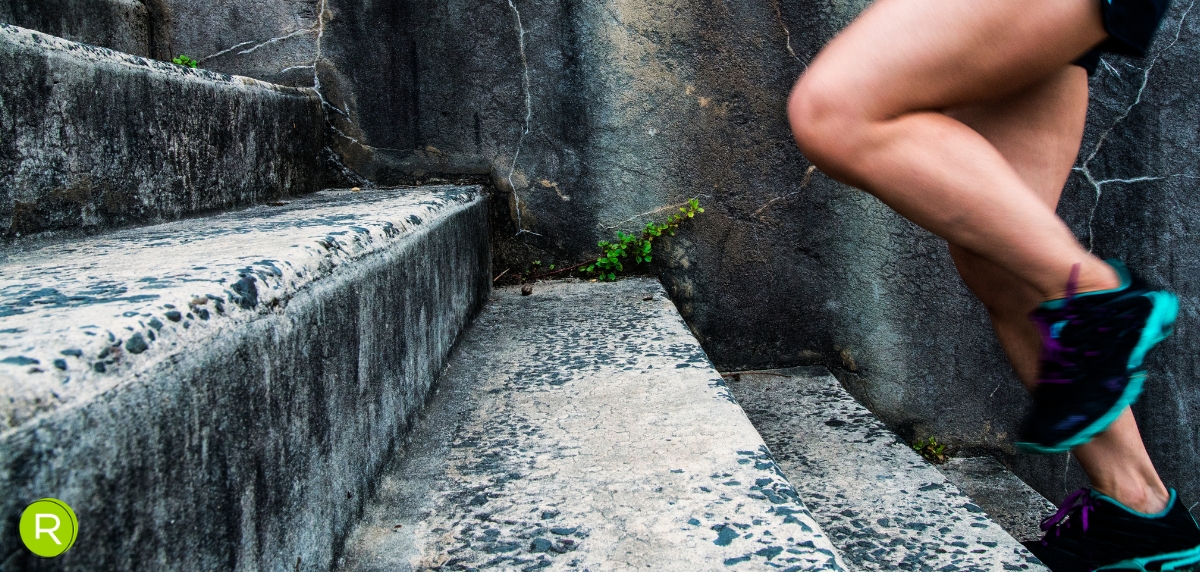
Increase of muscular power
Just as we can perform series at lower intensities, performing ascents at a maximum or near maximum pace in short intervals of time will help us to improve our muscle power because the contact time at each support is minimal and as reactive as possible.
But we can not only do it running, but a two-legged or one-legged work, for example, will help us to emphasize the plyometric work, so important to strengthen the tendons and to increase the capacity to store elastic energy in them. This will result in a more efficient and economical running technique.
Improved fatigue resistance
Just as prolonged ascents promote muscle strengthening, they will also serve to improve the cardiovascular component. Climbing stairs is a more demanding stimulus than running on asphalt, especially on the flat, so the perceived intensity will inevitably be greater.
The heart rate or subjective perception of exertion when climbing stairs will be higher compared to running on flat or undulating terrain.
Alternating uphill and downhill series will generate a sequence of effort and incomplete recovery that will help to improve resistance to fatigue, which will be a very favorable point in middle and long distance events such as the 10k, the 21k and the 42k.

High-intensity stimulus
As we mentioned in the previous point, stair training is a very interesting tool to stimulate our cardiovascular system, even to get to work high intensities. As with hill training, just a few seconds are enough to reach high levels of intensity, as long as the effort is high, very high or maximum.
This rapid increase in heart rate will be achieved by performing short and explosive ascent sequences, where we must experience a perception of high effort, leaving that comfort zone that we find so hard to leave sometimes.
Alternative to specific elevation work
We are aware that not everyone has areas available to specifically include positive and negative elevation gain. For both trail runners and those runners who participate in events such as the Behobia and who do not have slopes or mountain areas available in their immediate environment, stair training will to some extent make up for the lack of more specific uphill and downhill sessions .
Although the technique of running on stairs is not identical to running uphill, it will be a very effective way to accustom the muscles to perform a different workout than when running on flat and regular surfaces, in addition to improving our tolerance to more demanding and demanding efforts at a muscular and cardiovascular level.
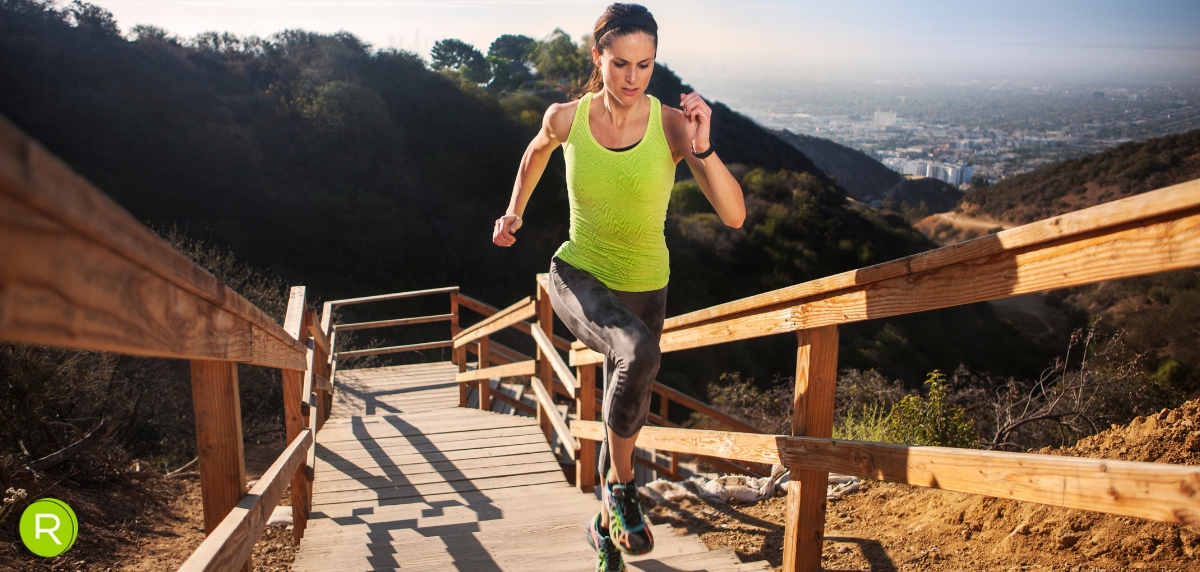
Stair training, a very complete and simple workout
Stair training, although it is not a substitute for strength training with weights, can be a very interesting element to promote a muscular workout different from what we are used to, which to a certain extent will also help us to improve our levels of useful strength and, above all, power.
It will also be a very effective way to stimulate the cardiovascular system without having to do long sessions over long distances. In our environment, hills may be conspicuous by their absence, but who doesn't have a sufficient flight of stairs to train on? No more talk, let's get to workout!
Read more news about: Running Training
